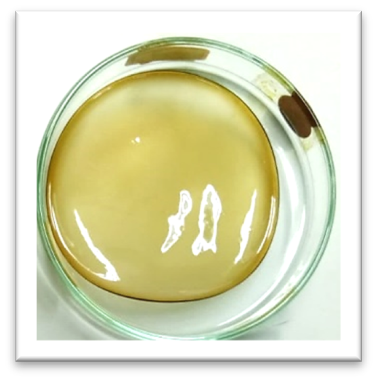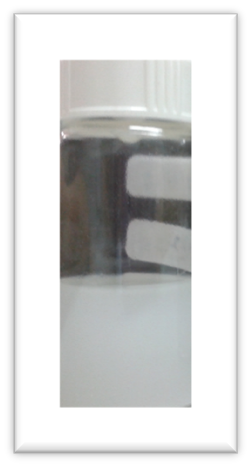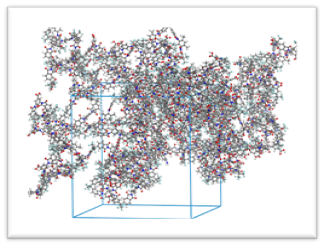
TAN Peng Chee
Assistant Professor Dr.
SDGs Focus



About Me
Dr. Tan Peng Chee pursued her undergraduate study in Chemical Engineering at Universiti Sains Malaysia and graduated in 2014. Later in 2019, she received her Ph.D. degree in Chemical Engineering from Universiti Sains Malysia working with Assoc. Prof. Dr. Low Siew Chun and is currently a Lecturer of Chemical Engineering at Xiamen University Malaysia. She is Graduate Engineer of the Board of Engineers Malaysia (BEM). Her research empowers the use of membrane technology for separation with polymer chemistry and nanotechnology being the major focus. During PhD, she successfully developed polyimide mixed matrix membrane as a tool for CO2 separation in the noble fight against global warming. Her research highlight includes in-depth understanding of imidization protocol, monomer atomic configuration and polymer-filler compatibility in producing defect-free membrane with tunable properties for CO2 separation. Besides, her membrane research experience also extends to water separation, where polyethersulfone membrane was successfully developed for effective humic substance separation via stringent phase inversion control.
- Ph.D., School of Chemical Engineering, Universiti Sains Malaysia, Malaysia (2019)
- BSc. (Chemical Engineering), Universiti Sains Malaysia, Malaysia (2014)
- Board of Engineers Malaysia (BEM): Graduate Engineer
- The Institution of Engineers, Malaysia (IEM): Graduate Member
- Review editor for the Frontiers in Membrane Science and Technology journal
Research Interests
Dr. Tan’s research empowers the use of membrane technology for gas separation and water treatment. In order to further improve the membrane separation performance, development of functionalized membrane is the main focus. For example, the incorporation of surface-functionalized nanomaterials into the polymer matrix for the synthesis of mixed matrix membrane with better gas permeability and selectivity. She also focuses on tailoring the properties of nanoparticles such as zeolitic imidazolate framework-8 (ZIF-8) and graphene oxide for the purpose of membrane fabrication. Moreover, she employs molecular dynamics simulation as a powerful computational tool to predict the chemical and physical characteristics of different membrane materials as well as the gas transport behaviours across the membrane.

Polyimide membrane for CO2 capture

ZIF-8 with tuneable particle size

Polymer model for prediction of gas transport properties in membrane
Research Projects
- Development of polymer blend mixed matrix membrane for gas separation
- Molecular dynamics simulation study of the gas transport properties of polymer blend membrane
Current Courses Taught
CME211 – Fluid Mechanics for Chemical Engineering
CME218 – Mass Transfer
- CME435 – Multi-Scale Modelling and Simulation
Local Grant(s)
Fundamental Research Grant Scheme (FRGS), Elucidating the role of covalently ionic liquid-functionalized graphene oxide on CO2 molecular transport mechanism in mixed matrix membrane (on-going)
XMUM Research Fund Cycle 6, Engineering glassy fluorinated polyimide membrane for CO2
separation (on-going)Review Editor for Frontiers in Membrane Science and Technology (Feb 2022 – present).
Reviewer for Journal such as Journal of Applied Polymer Sciences, Polymers, Chemical Engineering Research and Design, and etc. (2021 – present).
Journal
- Lai, S. F., Tan, P.C. (2023). Polyimide blend metal–organic framework‐based mixed matrix membrane for gas separation: A review. Asia-Pacific Journal of Chemical Engineering, e2970.
Teoh, G. H., Tan, P. C., Ahmad, A. L., & Low, S. C. (2021). Analysis of Organic-Inorganic Compatibility to Synthesis Defect Free Composite Membrane: A Review. Journal of Membrane Science and Research, 7, 29-37.
Chong, D. S., Jawad, Z. A., Tan, P. C., & Al-Fatlawi, M. S. A. (2020). The Influence of Blending Different Molecular Weights of Cellulose Acetate Butyrate for CO2/N2 Separation. Journal of Physical Science, 31, 91-112.
Tan, P. C., Oh, P. C. & Low, S. C. (2019). Role of aromatic polyimide membrane in CO2 separations: From monomer to polymer perspective. Jawad, Z. A. (ed.) Membrane Technology for CO2 Sequestration. CRC Press, Taylor & Francis Group, USA, ISBN 978-1-35-138081-2.
Tan, P. C., Ooi, B. S., Ahmad, A. L. & Low, S. C. (2019). Formation of a defect-free polyimide/zeolitic imidazolate framework-8 composite membrane for gas separation: In-depth analysis of organic-inorganic compatibility. Journal of Chemical Technology and Biotechnology, 94, 2792-2904.
Tan, P. C., Ooi, B. S., Ahmad, A. L. & Low, S. C. (2018). Monomer atomic configuration as key feature in governing the gas transport behaviors of polyimide membrane. Journal of Applied Polymer Science, 135, 46073.
Tan, P. C., Ooi, B. S., Ahmad, A. L. & Low, S. C. (2017). Size control and stability study of zeolitic imidazolate framework-8 to prepare mixed matrix membrane. Journal of Physical Science, 28, 215-226.
Tan, P. C., Ooi, B. S., Ahmad, A. L. & Low, S. C. (2017). Correlating the synthesis protocol of aromatic polyimide film with the properties of polyamic acid precursor. IOP Conference Series: Materials Science and Engineering, 206, 012049.
Tan, P. C., Jawad, Z. A., Ooi, B. S., Ahmad, A. L. & Low, S. C. (2016). Correlation between polymer packing and gas transport properties for CO2/N2 separation in glassy fluorinated polyimide membrane. Journal of Engineering Science and Technology, 11, 935-946.
Jawad, Z. A., Ahmad, A. L., Low, S. C., Lee, R. J. & Tan, P. C. (2016). The role of solvent mixture, acetic acid and water in the formation of CA membrane for CO2/N2 separation. Procedia Engineering, 148, 327-332.
Tan, P. C. & Low, S. C. (2016). Role of hygroscopic triethylene glycol and relative humidity in controlling morphology of polyethersulfone ultrafiltration membrane. Desalination and Water Treatment, 57, 19051-19061.
Book
- Tan, P. C., Oh, P. C. and Low, S. C. (2019). Role of aromatic polyimide membrane in CO2 separations: From monomer to polymer perspective. Jawad, Z. A. (ed.) Membrane Technology for CO2 Sequestration. CRC Press, Taylor & Francis Group, USA, ISBN 978-1-35-138081-2.
Conference Proceeding
- Tan, P. C., Ooi, B. S., Ahmad, A. L. and Low, S. C. (2017). Correlating the synthesis protocol of aromatic polyimide film with the properties of polyamic acid precursor. IOP Conference Series: Materials Science and Engineering, 206, 012049. doi: 10.1088/1757-899X/206/1/012049.
Current Supervision (Postgraduate only)
LEONG Kah Mun
Development of mixed matrix membrane with covalently functionalized graphene oxide for effective CO2 removal
2023 – Present
Xiamen University Malaysia
- Travel grant award to attend “Computational Materials Design (CMD) workshop” at Osaka Univesity, Japan (2018).
- HLAF Scholarship by Human Life Advancement Foundation (2015-2019).
- Bridging Fund Award by Universiti Sains Malaysia (2014).
- Lion-Parkson Foundation Scholarship by Lion-Parkson Foundation (2010 – 2014).
